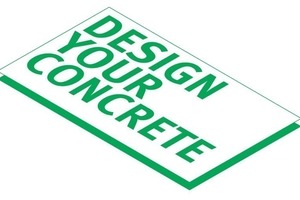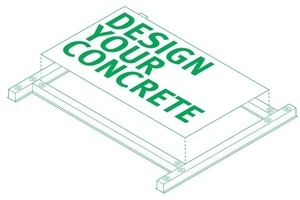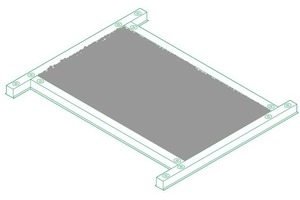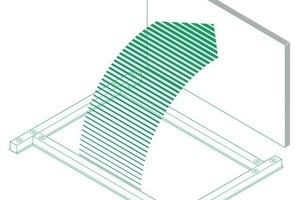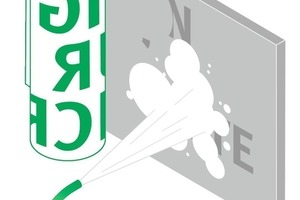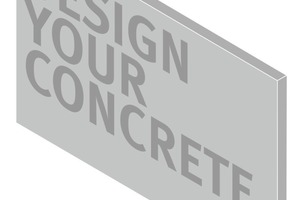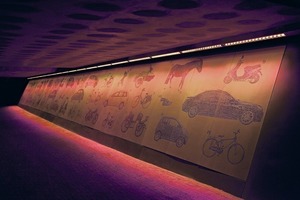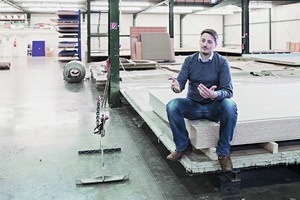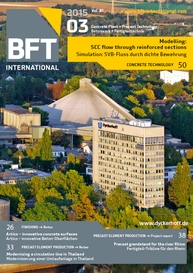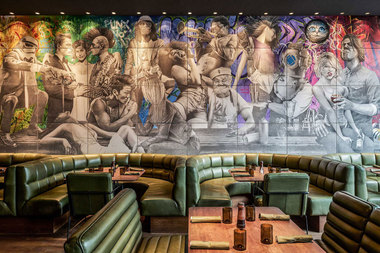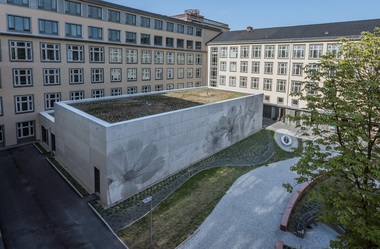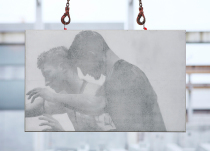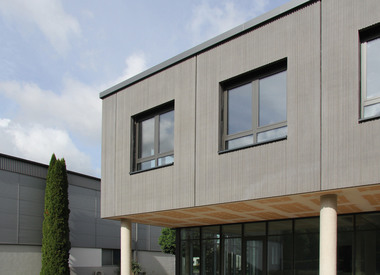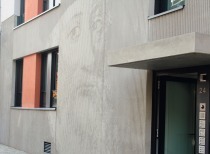Artico – innovative technique of using the final deactivation
“Art in concrete” is the slogan of Reckli Artico: an innovative technique of using the final deactivation of concrete for the precise washing out of the surface. The freedom of design becomes nearly limitless.
The aim of Artico, Reckli’s newest product, is to not only design the concrete surface by structuring it but also by creating optical effects. Photos, pictures, individual designs and graphics can be portrayed through the partial removal of the topmost cement skin. “Artico achieves the greatest impact with the least effort.” says Lutz Hammer, head of marketing at Reckli. One of the most important differences of Artico compared to the photo-engravement technique is that the motifs can be seen perfectly independent of lighting. Photo-engraving is often used on outer façades where the motifs appear proverbially in a different light depending on the position of the sun. The effects achieved with Artico can be experienced in any kind of light and from every perspective. For this reason the product can be used on both outer and interior façades.
The ease of use in the precast plant
The ease of use is of great importance for all Reckli products. The design is initially developed according to the wishes and requirements of the client. Subsequently the motif is transferred onto a magnetic vinyl or polythene sheet using silk screen printing. This works by applying a surface retarder onto the sheet which later reacts with pinpoint accuracy in the concrete.
The sheet is placed into the mould of the precast plant. The sheet has to lie flat without creases on the mould and causes a delayed setting of the concrete. After the concrete has hardened and the different parts have been demoulded, the sheet can be removed and the surface finally washed out which dissolves the topmost cement skin and exposes the underlying aggregate. The washing depth is approximately 1 mm creating a chiaroscuro effect that lets the motif protrude from the surface. Washing off the cement skin does not only change the surface optically but also alters its condition thus creating a haptic experience.
Detailed and precise images by using Artico
The Dutch town Maastricht is a shining example of how detailed and precise the images can be portrayed using Artico. Here, the two municipalities Limmel and Nazareth are connected via a railway underpass. The dutch artist Michiel Kluiters developed a design for the underpass that highlights the relationship between the two municipalities. One site of the tunnel is composed of elements of concrete arranged ›accordion-wise‹ that feature different street names. “When passing through the tunnel, one can see the street names of the district one is coming from.” Kluiters explains. When facing the wall, the onlooker can read the street names of both districts. On the other site of the tunnel, the concrete is decorated with pictures of cars, scooters, bikes and more.
For his project Via 2014 Kluiters took pictures of every means of transport he could find in both municipalities: e.g. horses, rollerblades, walkers. “They are all means of transportation that the residents of both districts use every day.” the artist states. Later, he converted the pictures into graphics that were then printed onto Artico-sheets. “It was time-consuming but the result definitely justifies the effort.” A house number is assigned to every illustration belonging to one of the street names on the opposite site. The closer one gets to the illustration, the more prominent the individual pixels become with which the pictures were transferred onto the sheets. “The process works very well with pictures like this. One can even recognize every spike of the bike’s wheels”, the designer explains. The picture itself stays recognizable. The size of the pixels and the grid are always coordinated with the client and can vary depending of the distance from which the illustrations are looked at.
Special mention of the German Design Award
“We developed the whole idea of Artico, because we were repeatedly approached by architects with questions concerning photoengraved concrete”, Hammer explains. “As specialist in the field of architectural concrete, it was only logical for us to satisfy this demand and create the product that our customers desire. Thanks to the innovative technique, we are able to realize almost every design two-dimensional on concrete surfaces.”
Brought to the market only recently, Artico was already awarded special mention of the German Design Award in 2015. In this category, the jury honors products that are innovative, unique and trend-setting in the German and international design landscape.

